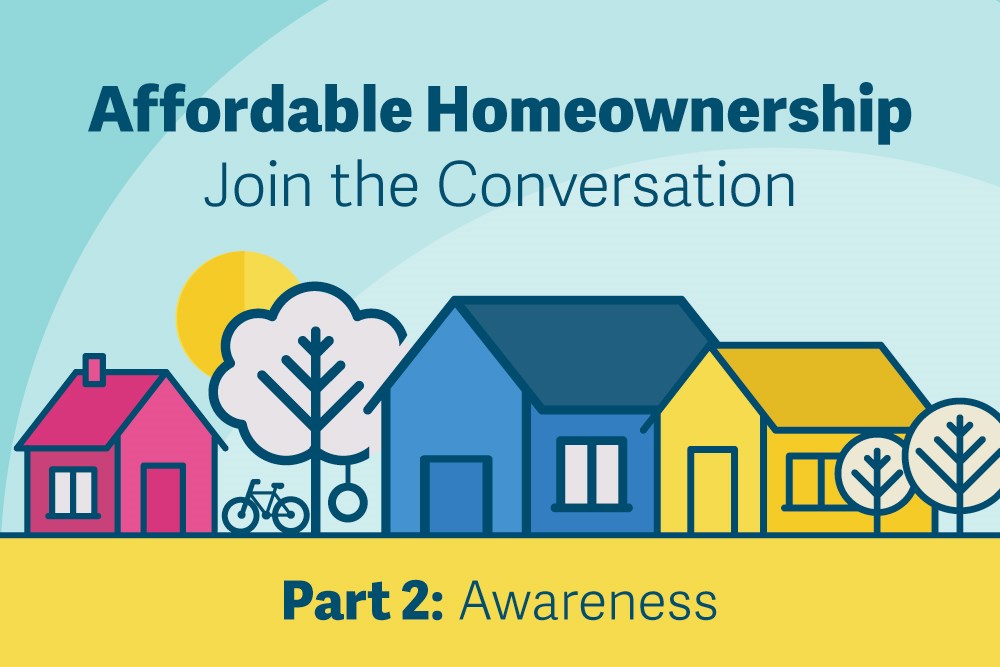This is the second in our 5-part Affordable Homeownership Series: Addressing the racial equity gap in homeownership
After reaching a low of 62.9% as we came out of the Great Recession, national homeownership rates have rebounded and, according to the Federal Reserve Bank of St. Louis, were at 65.4% at the end of 2021.
Yet too many Americans are being left behind.
The disparity in homeownership rates in our country is alarming: Black and Latino households are experiencing homeownership rates that are 31 and 26 percentage points lower than the white homeownership rate as of Dec. 31, 20211 – a wider gap than before the 1968 Fair Housing Act was enacted, according to the Urban Institute.
That people of color are finding entry into the American Dream of homeownership more difficult has received more and more attention in the media and in our industry. More individuals and institutions are looking to join the conversation, seeking solutions and creating plans to improve racial equity in housing.
In the first article of this 5-part series, Geoff Cooper laid out 4 areas any racial equity plan should attempt to address: Awareness, Readiness, Community and Solutions (ARCS). Here we will look a little closer at the first of those areas: Awareness. Are the right tools and platforms in place to encourage minority renters to understand the benefits of owning versus renting such that they desire to pursue homeownership?
Identifying the opportunity in your market
A reasonable approach to any strategy to narrow the homeownership gap starts with reaching out to those who have the income and qualifications necessary to own a home today, yet are currently renting. A recent report by Freddie Mac2 spotlights that exact opportunity by identifying a segment of the population who are not currently homeowners but are “mortgage ready” (defined by the report as 45 years of age or younger, not currently owning, and with a credit profile to likely qualify for a mortgage based on today’s underwriting standards). They estimate this group includes 3.4 million Black Americans and 8.3 Hispanic Americans.
So how do lenders help “mortgage ready” Americans of color who want to be homeowners achieve that dream? As you build your racial equity plan, you’ll want to better understand how many of those 11.7 million Americans are in your area and why they don’t currently own a home.
Reaching out to mortgage ready communities of color
One jumping-off point may be simply to broaden your approach to homebuying education. Many in the mortgage industry hear “homebuyer education” and think immediately of programs designed to explain the mortgage process to prospective buyers, and too often, only as a requirement to fulfill for certain loan programs.
Certainly, this area of homebuying education is vital and I in no way mean to diminish its importance. In addition to meeting loan requirements, homebuyer education better prepares renters to successfully become homeowners, and better prepares homeowners to meet their new responsibilities.
However, homebuyer education can mean so much more, and can serve a wider audience. Rather than tying education to the mortgage application:
- Widely promote the financial and emotional benefits associated directly with homeownership in your community
- Educate early on what it takes to get a mortgage today, specifically in areas of credit score, down payment and debt. Too many “mortgage ready” homebuyers may be self-selecting themselves out of the process merely because they don’t fully understand today’s mortgage requirements
Finding community partners
This is where building partnerships and coalitions within your lending footprint becomes important. Partner with local organizations focused on making a difference in your area to help reach out to these communities – both those that share a specific focus on homeownership, and others who may not share a housing mission, but work directly with demographics you are trying to reach.
For example, MGIC partners with the Boys & Girls Club of Greater Milwaukee to present the “Path to Homeownership” to recent or imminent college grads who are part of the Boys & Girls Club’s Grad Plus program.
Nonprofits are a great place to start, but faith-based organizations and local employers also offer opportunities to bring awareness about the value of homeownership to daily life – where people live, work and gather. Financial education and even employer-assisted housing programs have joined more traditional employee benefits, so workplaces can be excellent venues to provide information and reach more of the “mortgage ready” cohort.
Another example worth noting and potentially using as your blueprint is the CONVERGENCE initiative led by the Mortgage Bankers Association (MBA).
CONVERGENCE is a multi-year, cross-sector initiative launched in March 2020 aiming to promote minority homeownership opportunities through a series of place-based pilot programs. It involves collaboration by lenders, government, non-profit, and housing industry stakeholders. The first pilot of this program was started in Memphis, TN, followed by the second in Columbus, OH.
The program identified 4 key market gaps the MBA believes need to be addressed to begin narrowing the homeownership gap. Those are:
- The knowledge gap – misconceptions about the requirements of homeownership as too many believe they need a perfect credit score or a 20% down payment to obtain a mortgage
- The trust gap – the reluctance of many consumers, especially in minority communities, to trust financial institutions for fear of being mistreated or victimized
- The market gap – strategies for addressing housing inventory challenges, including issues of housing quality and neighborhood amenities
- The resource gap – increasing awareness by consumers as well as mortgage industry professionals on resources available including down payment and closing cost assistance programs
Building your checklist
As you build out your racial equity plan, here are a few suggestions to consider in the area of Awareness.
Define the market in your community
- Who are the underserved populations in your market?
- What are the current homeownership rates among different ethnicities in your lending footprint?
- What views do these demographics currently hold on homeownership? What is their trust level of lending institutions?
Identify organizations in the community that are known and trusted by the segment you are seeking to help
- Which nonprofit organizations that serve this community are either focused on housing or work in a more holistic approach to improve the quality of life among this demographic?
- Which local faith-based organizations may welcome the opportunity to partner with homebuyer education providers to serve their communities?
- Are there relevant existing efforts being led by local or state government? If not, which departments can you work with to launch new efforts?
Examine your current homebuying education content
- Do your website and social efforts offer education on homebuying or link to free education provided by the GSEs?
- How can you work with your existing homebuyer education provider partners to expand your efforts beyond meeting requirements for certain loans?
- What are you currently doing to help non-homeowners understand the value of homeownership and current mortgage requirements?
Research resources available
- Are you familiar with all the programs offering down payment or closing costs assistance in your market?
- Which employers in your area offer employer-assisted housing programs? Under conventional conforming guidelines, employer-funded grants are an acceptable source of funds for down payment and closing costs.
Keep in mind, so far we’ve only discussed those who are “mortgage ready” (whether they realize it or not) and how to help increase awareness among this group. The next area of focus in our ARCS Affordable Homeownership framework, Readiness, will turn our attention to those who are not yet mortgage ready, to show how you can help them overcome barriers they face.
Up next: Read Part 3 of our ARCS series >
1U.S. Census Bureau, Housing Vacancies and Homeownership
2Freddie Mac, “Who Are the Future Borrowers? A Deep Dive into their Barriers and Opportunities”


Join the conversation